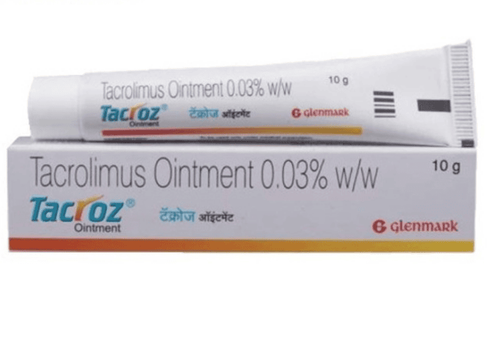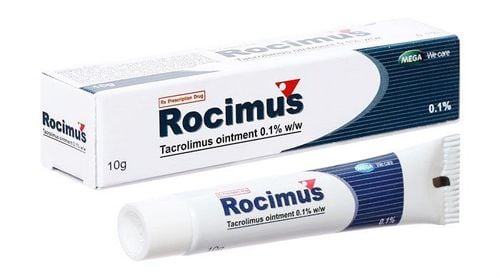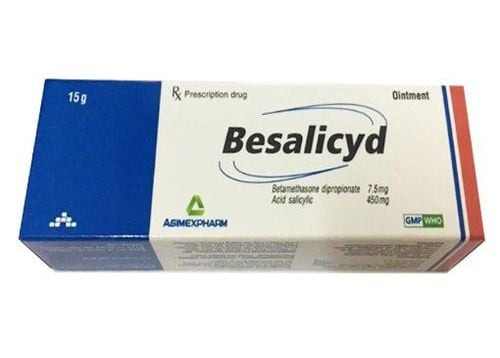This is an automatically translated article.
Crisaborole is a topical drug commonly prescribed to treat atopic dermatitis such as eczema, psoriasis,... So what are the uses of the drug and how to use it to bring about effective treatment?
1. What is Crisaborole?
Crisaborole is an inhibitor of phosphodiesterase 4 (PDE-4) - the enzyme that inhibits the reaction that forms adenosine monophosphate (cAMP) in cells. Inhibition of PDE-4 increases cAMP levels thereby reducing the symptoms of redness, itching, ... of atopic dermatitis by a mechanism that has not been clearly demonstrated.
The cause of atopic dermatitis such as eczema, psoriasis, eczema, ... is due to a combination of many genetic, environmental, and immune factors - showing symptoms of itching, erythema, scaling, swelling and cracking. Crisaborole works to reverse the above symptoms. Crisaborole is formulated as a non-steroidal topical ointment, rapidly absorbed after application, bound to plasma proteins about 97%, reaching stable plasma concentrations and taking effect after at least 8 day with the course of continuous application twice a day.
The drug is absorbed systemically after topical application and is metabolised through several stages to the final active metabolite, 5-(4- cyanophenoxy) -2-hydroxybenzoic acid. Finally excreted in the urine as an inactive substance.
2. Indications of the drug Crisaborole
Crisaborole is indicated for the local treatment of mild to moderate atopic dermatitis (eczema, eczema, psoriasis).3. Contraindications of Crisaborole
Do not use Crisaborole topical for the following cases
Patients are allergic to Crisaborole ingredients or any other ingredients of the drug. Children under 2 years of age are not indicated for use. Note when using Crisaborole:
Crisaborole is for external use only, do not drink or apply to open wounds, eyes, vagina, anus. Store the medicine at a temperature of 20-25 degrees Celsius, avoiding direct sunlight. Close the lid of the vial tightly after use. Do not use the same medicine vial for different patients even with the same pathological symptoms. The safety of the drug has not been proven on the fetus and child, so pregnant and lactating women only use the drug when absolutely necessary under the direction of a doctor. When using on 2 drugs applied to the same skin area, use at least 60 minutes apart. There is no evidence of drug interactions of Crisaborole with other drugs. However, before combining with any medication, you should consult your doctor.
4. Dosage and how to use the drug Crisaborole
How to use:
Crisaborole is a non-steroidal topical ointment. Apply the medication directly to the treatment area. Wash your hands before applying the medicine. Wash the affected area and pat dry with a soft towel. Take an appropriate amount of the medicine on your hand and apply it to the affected skin area. Do not rinse the treated area with water. Dosage:
Adults and children over 2 years old apply a thin layer of the medicine to the damaged skin twice a day.
5. Crisaborole side effects
Some unwanted effects may be encountered when using Crisaborole:
Local allergic reactions such as stinging, burning in the application area, redness, increased itching. Contact urticaria, erythema, swelling at the site of application and adjacent areas. Anaphylactic shock, fatigue, edema, dyspnea. In short, Crisaborole is a topical drug that works to relieve the symptoms of itching, scaling, and dryness of atopic dermatitis. The drug is applied topically but can be absorbed systemically and bring unwanted effects when abused. Therefore, the use of the drug must be strictly according to the doctor's prescription and dosage.













